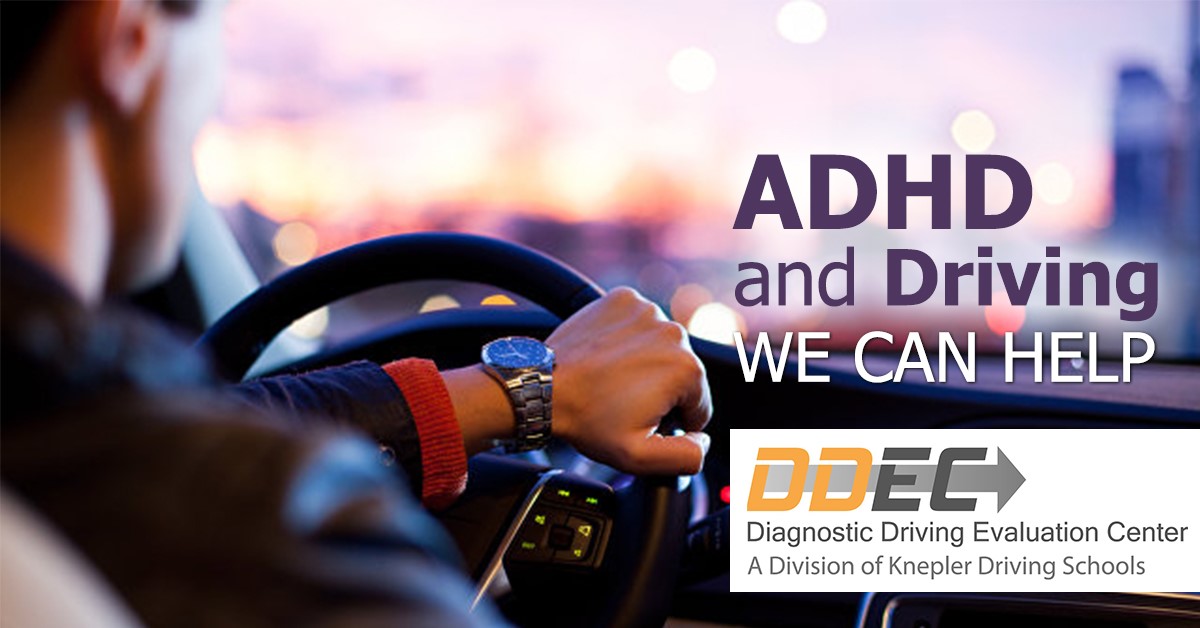ADHD And Driving: Research-Based Strategies For Safer Journeys

Table of Contents
Understanding the Challenges of ADHD and Driving
Driving requires a complex interplay of cognitive skills, including focus, attention, impulse control, and reaction time – areas often affected by ADHD. Let's examine the specific challenges:
Impulsivity and Risk-Taking
Individuals with ADHD often exhibit heightened impulsivity and risk-taking behaviors. These tendencies can manifest in several dangerous ways while driving:
- Examples of impulsive driving behaviors: Speeding, tailgating, abrupt lane changes, running red lights, ignoring traffic signals.
- Statistics on accident rates in ADHD individuals: Studies suggest a higher incidence of traffic accidents among individuals with ADHD, although precise figures vary depending on diagnostic criteria and study methodology. Further research is needed to establish definitive correlations.
- The role of executive function deficits: Weaknesses in executive functions, such as planning, organizing, and inhibiting impulsive actions, directly contribute to risky driving behaviors in individuals with ADHD.
Inattention and Distractibility
Inattention and distractibility are hallmark symptoms of ADHD, significantly impacting driving performance. These challenges lead to:
- Examples of inattentive driving behaviors: Missing traffic signals, failing to notice pedestrians or other vehicles, delayed reactions to hazards, drifting out of lanes.
- The impact of internal and external distractions: Internal distractions (racing thoughts, worries) and external distractions (loud music, conversations, billboards) further compound the difficulty of focusing on the road.
- Strategies for managing distractions: Minimizing distractions in the car, practicing mindfulness techniques, and using calming strategies can help improve focus.
Hyperactivity and Restlessness
Hyperactivity in ADHD can manifest as fidgeting, restlessness, and difficulty remaining still. Behind the wheel, this translates to:
- Examples of how hyperactivity affects driving: Excessive fiddling with controls, unnecessary adjustments to the driving position, jerky movements, and difficulty maintaining a consistent speed.
- Coping mechanisms to manage restlessness: Regular physical activity before driving, practicing relaxation techniques, and ensuring adequate sleep can help reduce hyperactivity.
- Benefits of regular physical activity: Physical exercise helps burn excess energy and improve focus, potentially leading to safer driving.
Practical Strategies for Safer Driving with ADHD
While ADHD presents challenges, many practical strategies can enhance driving safety.
Medication Management
Medication plays a vital role for many individuals with ADHD in managing symptoms and improving driving safety:
- Types of medication used for ADHD: Stimulants and non-stimulant medications are commonly prescribed. The choice depends on individual needs and responses.
- The importance of discussing medication with a doctor: It's crucial to have open communication with your doctor about medication efficacy and potential side effects, especially concerning driving.
- Potential side effects to be aware of: Some medications may cause drowsiness or other side effects that could impair driving ability. It's vital to be aware of these and adjust driving accordingly.
Driving Habits and Techniques
Adopting safe driving habits and techniques is crucial:
- Specific driving techniques: Maintaining a safe following distance, using turn signals consistently, avoiding distractions, and scanning the road ahead are vital.
- Benefits of driving practice: Regular practice in controlled environments, such as with a driving instructor, can build confidence and skill.
- Importance of planning routes: Planning routes in advance minimizes decision-making while driving, reducing cognitive load.
Utilizing Technology and Adaptive Aids
Technology can be a powerful ally in safer driving for individuals with ADHD:
- Examples of helpful apps and technologies: GPS navigation, hands-free calling systems, lane departure warning systems, and adaptive cruise control.
- Advantages of using voice-activated systems: Voice-activated systems minimize manual distractions, allowing drivers to focus on the road.
- Importance of keeping technology up to date: Ensuring your technology is updated and functioning correctly is essential for optimal safety.
Seeking Professional Support and Resources
Seeking professional help is often a critical step towards safer driving with ADHD.
Therapists and Driving Rehabilitation Specialists
Professional guidance is invaluable:
- Types of therapy that can be beneficial: Cognitive Behavioral Therapy (CBT) and other therapies can help develop coping strategies for ADHD symptoms.
- The role of a driving rehabilitation specialist: Driving rehabilitation specialists can assess driving skills, identify areas for improvement, and provide tailored training.
- Finding qualified professionals: Referrals from doctors, therapists, or online directories can help locate qualified professionals.
Support Groups and Online Communities
Connecting with others facing similar challenges offers valuable support:
- Finding online support groups: Online forums and support groups dedicated to ADHD and driving can provide a sense of community and shared experience.
- The benefits of peer support: Sharing experiences, tips, and strategies with others can be empowering and helpful.
- The importance of a strong support network: A supportive network can significantly impact an individual's ability to manage ADHD symptoms and improve driving safety.
Driving Assessments and Evaluations
Professional assessments offer valuable insights:
- What a driving assessment involves: These assessments evaluate driving skills and identify areas needing improvement.
- Identifying areas needing improvement: Assessments pinpoint specific challenges and suggest targeted interventions.
- Adapting driving habits based on assessment results: Assessments provide a personalized roadmap for improving driving safety.
Conclusion
Successfully navigating the challenges of ADHD and driving requires a multifaceted approach. By understanding the specific difficulties presented by ADHD, implementing practical strategies, and seeking professional support when necessary, individuals can significantly improve their driving safety and confidence. Remember, responsible driving is achievable with consistent effort and the right resources. Take control of your journey and learn more about managing ADHD and driving today! Start by researching local driving rehabilitation specialists and support groups to begin your path towards safer driving.

Featured Posts
-
 A Geographic Analysis Of The Countrys Top Emerging Business Markets
Apr 29, 2025
A Geographic Analysis Of The Countrys Top Emerging Business Markets
Apr 29, 2025 -
 Financial Update Musks X After The Recent Debt Sale
Apr 29, 2025
Financial Update Musks X After The Recent Debt Sale
Apr 29, 2025 -
 Concern Grows For Missing British Paralympian Sam Ruddock In Las Vegas
Apr 29, 2025
Concern Grows For Missing British Paralympian Sam Ruddock In Las Vegas
Apr 29, 2025 -
 Car Ramming Attack On Canadian Filipino Community What We Know
Apr 29, 2025
Car Ramming Attack On Canadian Filipino Community What We Know
Apr 29, 2025 -
 Auto Legendas F1 Motorral Szerelt Porsche Koezuti Verzio
Apr 29, 2025
Auto Legendas F1 Motorral Szerelt Porsche Koezuti Verzio
Apr 29, 2025
Latest Posts
-
 Yate Recycling Centre Incident Air Ambulance On Scene
Apr 30, 2025
Yate Recycling Centre Incident Air Ambulance On Scene
Apr 30, 2025 -
 Reduire La Mortalite Routiere L Efficacite Des Glissieres De Securite Sur Les Routes Francaises Or Adapt The Country As Needed
Apr 30, 2025
Reduire La Mortalite Routiere L Efficacite Des Glissieres De Securite Sur Les Routes Francaises Or Adapt The Country As Needed
Apr 30, 2025 -
 Air Ambulance Called To Incident Near Yate Recycling Centre
Apr 30, 2025
Air Ambulance Called To Incident Near Yate Recycling Centre
Apr 30, 2025 -
 Ameliorer La Securite Routiere L Installation De Glissieres Un Investissement Pour Sauver Des Vies
Apr 30, 2025
Ameliorer La Securite Routiere L Installation De Glissieres Un Investissement Pour Sauver Des Vies
Apr 30, 2025 -
 Get Google Slides Free Android I Os Web App Download
Apr 30, 2025
Get Google Slides Free Android I Os Web App Download
Apr 30, 2025
